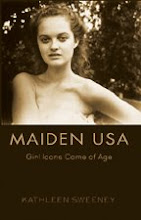Here’s what I had to say in today’s Philadelphia Inquirer:
I confess: I dread this time of year. It might sound strange coming from the executive director of the National Women’s Studies Association, but Women’s History Month reminds me of our education system’s failures.
I hope you’ll read the full op-ed, and especially my ideas for solutions, and let me know your hopes for this time next year.

 My book,
My book, 





